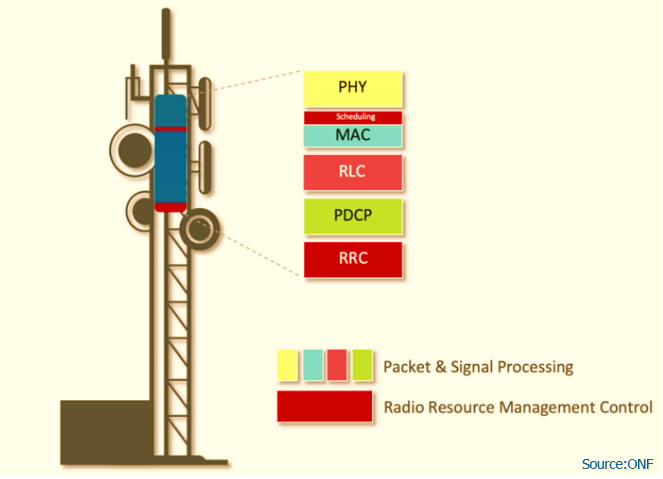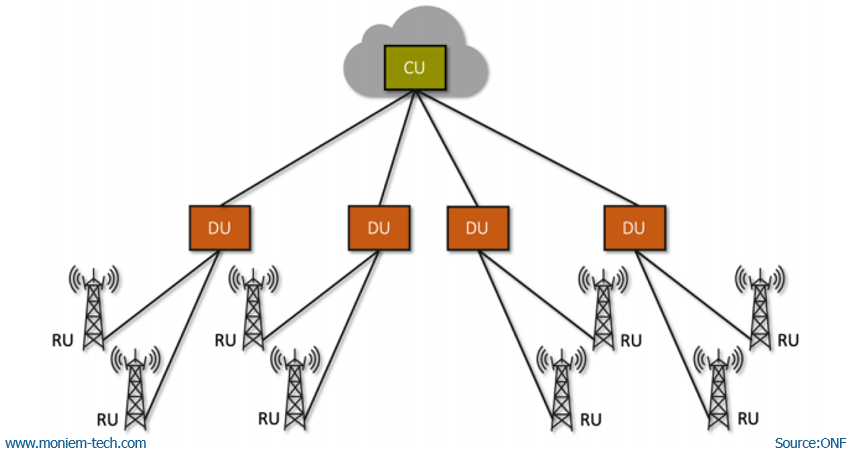In the cellular network, RAN provides wide-area wireless connectivity to mobile devices. Towards this end, it conducts two fundamental tasks:
- It converts IP packets to Physical Layer packets suitable for transmission over the time-varying mobile channel using packet and signal processing techniques.
- It conducts Radio Resource Management (RRM) control to determine how best to use and manage the precious radio resources to provide connectivity to active end devices.
To conduct these tasks, 3GPP has architected the RAN using a protocol stack as illustrated in the below figure:
-
Radio Resource Control (RRC)
The main services and functions of the RRC sublayer include broadcast of System Information related to the non-access stratum (NAS), broadcast of System Information related to the access stratum (AS), Paging, establishment, maintenance, and release of an RRC connection between the UE and E-UTRAN, Security functions including key management, establishment, configuration, maintenance and release of point to point Radio Bearers. -
Packet Data Convergence Control (PDCP)
It is responsible for Header compression and decompression of IP data, Transfer of data (user plane or control plane). -
Radio Link Control (RLC)
RLC operates in 3 modes of operation: Transparent Mode (TM), Unacknowledged Mode (UM), and Acknowledged Mode (AM). RLC layer is responsible for the transfer of upper layer PDUs, error correction through ARQ (Only for AM data transfer), Concatenation, segmentation, and reassembly of RLC SDUs (Only for UM and AM data transfer). -
Medium Access Layer (MAC)
MAC layer is responsible for Mapping between logical channels and transport channels, Multiplexing of MAC SDUs from one or different logical channels onto transport blocks (TB) to be delivered to the physical layer on transport channels, demultiplexing of MAC SDUs from one or different logical channels from transport blocks (TB) delivered from the physical layer on transport channels, Scheduling information reporting, Error correction through HARQ, Priority handling between UEs by means of dynamic scheduling, Priority handling between logical channels of one UE, Logical Channel prioritization.
-
Physical Layer (PHY)
Physical Layer carries all information from the MAC transport channels over the air interface. Takes care of the link adaptation (AMC), power control, cell search (for initial synchronization and handover purposes), and other measurements (inside the LTE system and between systems) for the RRC layer.

Disaggregation of the RAN effectively splits the RAN protocol stack so that the individual components can be realized independently. This aims to deal with the challenges of the high total cost of ownership (TCO), high energy consumption, better system performance by intelligent and dynamic radio resource management, as well as rapid, open innovation in different components while ensuring multi-vendor operability.
RAN Disaggregation
RAN disaggregation solution needs to enable a distributed deployment of RAN functions over the coverage area, as illustrated in below figure:

- Central Unit (CU): will centralize the “packet processing functions,” realize them as virtualized network functions running on commodity hardware and place them in geographically centralized telco edge cloud locations.
- Distributed Unit (DU): will realize “baseband processing functions” across cell sites, realize them as virtualized network functions running on commodity hardware, allowing for possible hardware acceleration using FPGAs, etc.,
- Radio Unit (RU): will enable geographical coverage using “radio functions” across antenna sites, realized on specialized hardware.
The disaggregation solution needs to be flexible, in that, based on the use-case, geography, and operator choice, in addition to the CU–DU-RU split, it should also allow for the possibility of realizing the base stations as i) two disaggregated components: CU and DU+RU, and/or CU+DU and RU, or ii) all-in-one: CU+DU+RU.
Source: ONF & 3GPP
